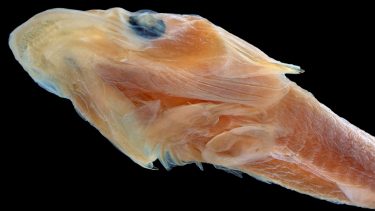
A set of curious researchers, state-of-the-art visual technology and a bit of good luck helped find a new fish whose tooth collection — an impressive number of tiny, conical teeth — could put a shark to shame.
Scientists at the University of Washington, Texas A&M University and the Western Australian Museum have discovered and named a new genus and species of clingfish after stumbling upon a specimen preserved in a jar dating back to the 1970s. The fish, Nettorhamphos radula, was unmistakably different from the other 160 known clingfishes, named for the disc on their bellies that can summon massive sticking power in wet, slimy environments.
Scientists, including co-author Adam Summers of the University of Washington’s Friday Harbor Laboratories, are interested in clingfish for their ability to stick to rough surfaces. The finger-sized fish uses suction forces to hold up to 150 times its own body weight. Understanding the biomechanics of these fish could be useful in designing devices and instruments to be used in surgery, or to tag and track whales in the ocean.
Read more at UW Today »
